The Royal Air Force has begun long-range operations in the Indo-Pacific under Operation Hightower, deploying F-35B Lightning jets to conduct joint activities with Japanese and South Korean forces.
The mission, they say, underscores the UK’s commitment to Indo-Pacific security and highlights the RAF’s ability to deliver strategic air power far from home.
“Operation Hightower demonstrates the Royal Air Force’s ability to project air power globally, with UK F-35s operating at extended range from the UK Carrier Strike Group, supported by Air Mobility Force Voyager. The RAF is collaborating and exercising with the Republic of Korea and Japan to strengthen defence ties and improve interoperability with the Japan Air Self-Defense Force (JASDF) and the Republic of Korea Air Force (ROKAF).
RAF personnel and UK F-35s will conduct joint activities, supporting strategic objectives and reinforcing the UK’s commitment to Indo-Pacific security. Central to this effort is the RAF’s Voyager – part of the Air Mobility Force, which plays a vital role in enabling long-range operations. Voyager provides both air-to-air refuelling and airlift, allowing RAF assets to operate far from the UK or the Carrier Strike Group (CSG) with sustained tempo and flexibility.”
Supported by the RAF’s Air Mobility Force Voyager, which provides both air-to-air refuelling and strategic lift, UK F-35s are operating at extended range ahead of the UK Carrier Strike Group as part of the broader Operation Highmast deployment. RAF personnel and assets had earlier pre-positioned in Darwin, Australia, where they participated in Exercise Talisman Sabre.
From that forward posture, the RAF began Hightower with exercises and training missions alongside the Japan Air Self-Defense Force (JASDF) and Republic of Korea Air Force (ROKAF). Joint training includes tactical integration, shared mission planning, and combined flight operations.
The RAF describes Operation Hightower as a demonstration of “reach and resilience,” with Voyager tankers acting as a key enabler for sustained combat air operations beyond the range of carrier-based aviation.
These activities form part of the UK’s broader strategy of maintaining a persistent presence in the Indo-Pacific, working closely with allies to ensure regional stability through enhanced interoperability and deterrence.




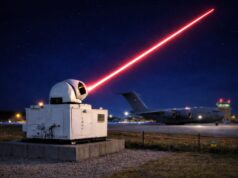
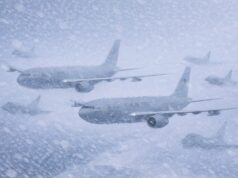
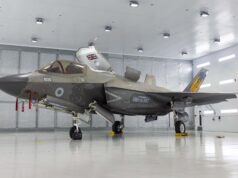
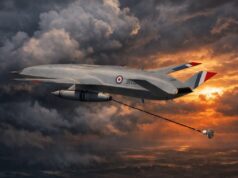
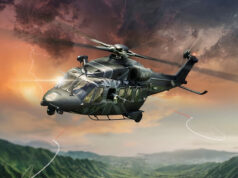
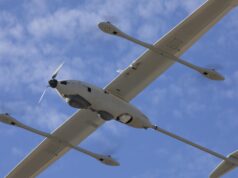
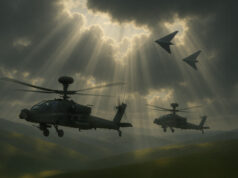
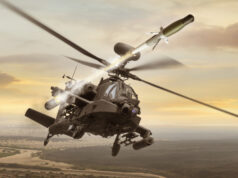
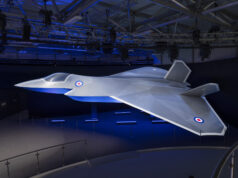

Not too long range as the F35 range is crap, and its more expensive then the F35A and it can not carry as much weapons, great buy as always would be cheaper in the long run to have bought F35A and fitted cats etc to our carriers. As always we do things arse about face it always cost more and we have less kit/planes. When will the MOD ever learn. Even you USA are scaling back F35 B numbers, and we have buy the F35A as the F35B can not carry nuc’s and lacks the range,
F35A is *not* carrier compatible.
F35C is the catapult compatible version.
F35C only has one single customer USN so the upgrade pathway is USN only.
F35B has more international sales than USMC.
The major advantage of F35B is the speed and relative cheapness of carrier deck qualifying the pilots. To use catapults takes a huge amount of deck crew and pilot training and costs fortunes. It is also a highly perishable skill and needs to be prequalified routinely.
Catapult landings are also high stress high risk events that can and do go wrong on USN ships.
The range difference between F35A/B/C isn’t that significant given the real long term usage case is with standoff weapons.
If the F35B is flying CAP over the CSG it makes little difference to duration.
My mistake i got F35A/C crossed over, The F35B has shorter range, shorter flight time and can not carry nuc’s ands way its more expensive, Why did we not buy the F35C even the USA is cutting back on them. It seems we buy less that can do less but then talk it up as great idea. We lost an F35 at sea with not cats etc, hardly much better is it, we had one stranded in India, they are a fix for an self made problem.
The MOD and the higher ranks are always talking up their poor choices, as if its great idea, we spend more to get less, then years later we spend more to fix it but still take it up as better. When is less for more better?
“My mistake i got F35A/C crossed over,”
No worries – glad we straighten that out!
“The F35B has shorter range, shorter flight time”
Yes a bit but not that much IRL.
“and can not carry nuc’s”
Why are nucs necessary for carrier?
If you went back to nuc depth charges then they would be cab delivered as before.
“ands way its more expensive,”
It is more expensive but the EMALS catapults are hugely expensive and don’t work perfectly yet.
The pilot deck qualification is actually really important.
The other thing is that VSTOL can operate in higher sea states – rougher seas than CTOL.
“Why did we not buy the F35C even the USA is cutting back on them.”
Because it would have cost £££££stupid to change the carrier design in 2010 and added the catapults. Only one of the carriers would have been modified. F35C is a small number of frames due to zero exports so upgrade costs per frame will be eye watering.
“It seems we buy less that can do less but then talk it up as great idea.”
We have got something superb for not a lot of ££££ compared to what the US or France spends.
“We lost an F35 at sea with not cats etc,”
It would still have been lost if B/C as the result of leaving the intake covers in the engine duct would have been the same.
“we had one stranded in India,”
Aircraft break and always have done. Lots of Harriers ended up in odd places that I know of. The difference these days is social media and camera phones.
“The MOD and the higher ranks are always talking up their poor choices, as if its great idea, we spend more to get less, then years later we spend more to fix it but still take it up as better.”
Actually the QECs and F35B present superb value to UKPLC and are a huge force – stronger than most countries entire air forces.
“When is less for more better?”
I don’t agree. We just need to fund F35B properly and buy enough to cover its various roles.
And stop the RAF tribalism ‘if we send people in carriers they leave – they didn’t sign up for that’ – which has always been the RAF’s pathetic excuse for not wanting to do more carrier based ops even back to joint Harrier days.
Some very good points there, yes the F35C is only used by the US navy, i was under the idea that the F35B cost more than F35C, happly to be corrected though, and yes one issue is RAF whining about carrier duties etc and always has been. For the RAF its should have been F35A for the navy F35B/C but more of them, having the RAF on carriers is not great idea just inlarge the Navy air arm and leave the RAF to fly the F35A from land, ie buy the 48 we were going to buy any way give them all to the navy. Then buy the rest as cheaper but longer range nuc capable. Operating type types not idea but we are going to do that any way with 12 F35’a for the nuc role,
This is absolutely correct. I’m sick of hearing people go on about how we should have gone for F-35C without any idea of the amount of training and cost this would have incurred. I doubt either ship would still be in service had we done so. There is a need to invest in training and spares for the existing F-35B fleet and I’d like to see another buy of around 24 aircraft split 50:50 between the A and B to ensure about 70 operational Bs (enough for 3 operational squadrons and a training fleet) with enough As to have a fourth op squadron as well as some for training. However it’s more important to ensure we can make full use of the 47 already on order and the next 27 before buying more. In fact I’d rather see more investment in more P-8As and perhaps 20 or so more Typhoons.
All good points SB, I’d suggest there’s a trade-off to be had whichever option we would take, so the arguments are not as clear-cut as first considered. In any case, am I correct in saying the C variant isn’t that much cheaper than the B, so, looking at unit costs of jets alone (excluding CATOBAR v STOVL system argument) not much of a saving in going for the C variant anyway? We just need a decent AAR system in place that extends the range of the Bs and puts our carriers further out of harms way. Oh, and a better AEW&C system than Crowsnest while we’re at it.
The problem that is run into with the Charlie variant is that
– you have a small fleet which is USN focussed so even less chance of non US weapons integration – in the long run Charlie will not be cheap as the costs of upgrade cycles are shared across so few frames; and
– you are stuck using EMALS that had some serious cost issues associated with it.
If UKPLC had gone down the Charlie variant route it is perfectly possible we would have one partially functional carrier as EMALS has not been smooth.
There is a reason that QEC has more 5th gen jets on it than a USN CVN…..and that is to with some pragmatic decisions.
One of the BOOM posts from SB. Spot on.
USN will often lose more than one aircraft per cruise. Obviously they are not all CATOBAR related but still.
The C version is not nuclear capable,it is only the A cleared and wired for nuke ops👍
It’s not just the F-35B/Cs that aren’t certified for nuclear weapons, nor are our carriers. I might be wrong, but I believe the only carrier certified for nuclear weapons is the Charles de Gaulle. As I remember it, it went through a midlife refit after the French ceased to carry nukes on it, but there was an article that stated they were keeping the separate nuclear-certified armoury during the refit, just in case they changed their minds. Given the downturn in international relations since then, it was clearly the right decision.
The USMC are also procuring F-35Cs.
True
But it is effectively a single customer as it is for launching off CVN.
Hi SB,
I’d say the Marines are a separate customer from the USN. While USMC F-35Cs do and will continue to operate from USN CVNs, not all of them will. The Marines have a commitment to the Navy to participate in Tactical Aircraft Integration, but they also have global commitments elsewhere and will definitely operate their Cs from land as well, probably much more often than aboard CVNs.
Just for information, per the recently published USMC Aviation Plan 2025, the Marines intend to purchase 280 F-35Bs and 140 F-35Cs.
@Paul
Whilst USMC and USN have separate budgets mandated from Congress……I do think their versions of F35C will be common as the costs of have individual tweaks to them would be eye watering. Also 140 UCMC F35C is not a huge number in the scheme of things.
280 F35B is a very large airforce worth of F35B – USMC could comfortably deal with the Russian threat by themselves with that number of frames never minding adding in the F35C they are proposing for the land/CVN components.
I think the 280 F35B is probably driven by the number of spots they actually have for the frames on the GATORS and what they might use on QEC multiplies by 2 to allow for serviceability and then multiply by 1.4 for attritional holdings and that does, pretty much, get you to the 280.
Revers that logic
80 – Attritional
200 – in fleet usage
100 – deployable at any one time
~24 – QEC
~8 each for ~9? GATORS
or
~36 on QEC
~ 7 each on ~9 GATORS
And there is a reason that QEC was built with US comms spaces……
Same F-35C for the USN & USMC–the Marines have a long history of designating a handful of their squadrons as prioritized for carrier operations rather than expeditionary. “Why?” is a good question, as it predates the downsizing of the 1990s. However, all Marine airmen & units are expected to be qualified to operate from CVNs.
It’s worth noting that a) we’ll *never* know all that might or might not have been had the RN gone the STOBAR/CATOBAR route . . . but b) there would have some cost mitigation in sharing technology, training, resources etc. w/ the USN & our F-35Cs. Likewise–as part of that–the RN would likely have operated some number of Hornets, prob the EA-18G. It would have been far cheaper to use F/A-18E/Fs & EA-18Gs instead of a navalized Eurofigther . . . but of course either way a STOBAR/CATOBAR option would have been much more expensive overall.
As others have noted, the MoD shot itself in the foot by promising the bean-counting pols that a joint RN-RAF F-35 force could be the fixed wing component of the QE fleet–it is not enough for *either* prolonged, sustained carrier ops nor land-based ops. You essentially have 2/3 the fighter fleet being asked to do 100% of the mission(s). I get it–it was a necessary white lie to the Cameron gov’t but those lies have become myths that the UK Treasury has taken to heart 15 years later . . . namely, that your country is a bankrupt third world one instead of the 6th largest economy on Earth. Italy can afford more fixed wing aircraft, to include enough F-35Bs for its own carrier without leaning on the Marines . . . but Britain can’t?!
Obviously, questions of a nation’s defense industrial base changed dramatically after my countrymen decided to elect the Dear Orange Leader, but Britain’s self-imposed fiscal “crisis” means that there will be a hollowness to capability for years & years to come.
Catapult landings sound extremely dangerous mate!!
Joking aside, yep, spot on, F35B makes far more sense from a British perspective.
The fact that your stating F35A can be launched of a carrier probably means you should not be commenting on here.
Sorry early morning my mistake, got my A and C mixed up its hard to be perfect 24/7, how do you manage it?
No worries happens to the best of us 😀
It’s his Dyslexia, he can’t help it.
The F-35B has a combat radius equal to or greater than that of the F-18s which comprise the vast bulk of the USN carrier strike fleet; and they are vastly more capable. QE and POW effectlvely increment USN carrier strike presence by 20%; not to mention interoperability with the America class and other allied LHDs.
So same range as the jet is meant to replace, my point is its not the best choice but we do have a habit of make do and mend that cost far more but gives us less. We are world class at that, then we talk it up and make out its better,
Bit like being married then 😂
may be yours not mine,
Hello Martin, please keep posting, I’m having so much fun, you really have made my Friday morning !
Glad i can help why you carer is not there, mental health is hard at times. Are still not taking your meds? Glad to help.
Super Hornets can carry fuel tanks to extend their range and can be refuelled in flight. And, can carry very long range weapons like LRASM and JASSM.
Yeh, I know; the dearth of stand off weapons for the F-35B is frustrating. My gopgling tells me that integration of JASSM and LRASM have flight tested as part of the mythical Block 4 software upgrade. I think this upgrade is what is needed for Meteor and Spear 3 integration. I have a vague memory of composit external fuel tanks – not heard anything about that.
Except the tradeoff of external or conformal fuel tanks is reduced payload weight.
As usual. Your comment is full of drivel.
Wow they are that good, glad you read them all, thank you. I’ve never read any of yours so i’ll reserve comment.
As far as I am aware the F35A cannot be carrier launched, only the C version. I believe the C version is more expensive than the A, by how much I have not googled.
A fleet of C’s would be needed for uniformity although it doesn’t seem to have stopped starter ordering A’s.
Not sure we need a nuclear capable aircraft.
Range of F35b is…adequate..for most thongs and just because it is shorter ranged than an A or C does not make it “crap”. Or at least, please define “crap range”.
When the B finally gets to carry Meteor and Spear3 and hopefully we get some ASHM to hang off it, it will be adequately armed even if the A might carry one or two more things internally.
Typhoon should do the heavy lifting with F35 doing stuff it’s best suited for.
AA
When the B finally gets to carry Meteor and Spear3 and hopefully we get some ASHM to hang off it, it will be adequately armed even if the A might carry one or two more things internally. When will that be as there are problems with the USA letting have access up dates etc to fit them, shorter range, higher price, shorter flight time, how is that better?
Can you keep going all day please, I haven’t laughed so much for ages, can’t wait to show all my carers later when they are giving me all my meds.
Oh and please please don’t proof read anything you type before posting, it’ll spoil the fun. 😁
Great, small things please small minds, all ways happy to help. Made my day making you happy, thank you. Its makes it all worth while. Message me any time when you feel a bit down night or day I will do my best to lift the mood. One day I aspire to be as perfect as you and so bright, must hard being near god like but a bit unhinged. Look forward to your reply, it helps with my dyslexia a lot. The confidence you pass to others to deal with their issues is mind numbing.
When I saw “32” comments, I thought, Perfect — dogs are walked, Mrs. JJ is at the gym (so no “taskings” for at least an hour). I made a coffee, sat down, ready for some brilliant insight… but Martin had other plans.
#👀
Morning JJ, I should stick around, looks like he’s getting ready to explode. All the signs are there !
My excuss is dyslexia , what is your? arrogance?
Glad to hear your marriage is in good shape Martin. Enjoy life while you can. I’m 7 years widowed and my next milestone in life is likely an appointment with my Maker. 🤣
I agree with the thrust of your post but it got me thinking.
I’d be willing to wage a fiver on the idea that an F-35A, perhaps with a somewhat strengthened undercarriage, could launch from a QE carrier. I’m more certain the F-35Cs could. Of course neither could land back on the carrier, and it would need the full length of the carrier to get much payload in the air. That’s the penalty of running STOBAR (or in this case just STO…). STOBAR compatible jets have a strengthened airframe as well as a strengthened undercarriage with respect to their land counterparts: for example the J-15 and the Mig 29K, but the landing stresses are far greater than the take-off stresses, which is why I think the F-35A might manage a one-time takeoff without that.
I wonder if an F-35A with a ramp take-off could lift as much payload/fuel as a F35B. I doubt it. All theoretically, of course. As it can’t land again, nobody would be silly enough to try it to find out for real.
Pointless if you have bases secure enough to operate Voyager from you might aswell base the combat aircraft at the bases? It also doesn’t take a month to fwd deploy aircraft in trail rather sailing a ship.
Well put. Carriers are a pure vanity project for the RN….
Vanity point taken but in fairness, at the time they were conceived I think the US was keen for us to supplement the USN carriers’ availability. Bit like having more bobbies on the world policing beat. So they were specced for ‘super carrier’ sortie rates and strike radius- not Nimitz levels but not too shoddy – Kitty Hawk class maybe. The F-35B is more than competitive with the F-18 and were it not for the delay in stand off weapons and our lack of escorts this ambition has arguably been achieved. The problem for all carriers is that AShMs have evolved in sophistication and now have much greater range than the carriers strike range. Tricky when the opponent has a longer reach.
The carriers were the right idea at inception and then the MOD spent over £20Bn from 2003 onwards fighting two disastrous wars on a peacetime budget, which decimated all three services.
This stripped us of the conventional capability we actually require as part of our core defence requirements much closer to home. Insufficient armour, air power and ships has been the result and
the carriers look odd because of that backdrop not because they were are vanity project.
Agreed. And the carriers are bought and paid for, so they might as well get used – if they were scrapped you can bet your last pound the savings wouldn’t go anywhere near the armed forces.
I think the RN and the RAF are starting to rebuild, or at least trying to, but the government (and previous ones) wasting money on ‘look at me’ vanity projects means it will take far too long. Not so sure about the Army, which currently doesn’t seem to know what it’s for.
Believe it was right here on UKDJ that the Army plans to buy *138* Challenger 3s . . . which would definitely suggest it either secretly sees its role only as conducting parades . . . or its denial.
The cost to the services of the Iraq & Afghanistan wars was real & can’t/shouldn’t be denied–and if all those pounds were spent as planned in 1997 then, yes, the carriers look quite reasonable. **However** … militaries exist to fight wars, not stage parades. And we usually don’t get to choose our wars–at least the military doesn’t. Without re-litigating the 2000s, it’s worth remembering that there was little debate about joining the fight in Afghanistan and that other nations made greater prolonged per capita contributions (like Denmark–though there’s a limit to that comparison). To say “everything would have been alright with our warfighting force . . . if we just hadn’t fought any wars . . .” is a bit like a hospital blaming its current woes, like limited medical supplies, on having so many patients or so much sickness.
The fact that Iraq was so unnecessary, however, does really make the consequences all the more painful.
Who knows how the Forces and their budget would have fared from, say, 2010 onwards had the rest of history gone more or less the same–just no Iraq invasion? Would that money have *really* stayed in the MoD? I’m inclined to doubt it. Would Blair, Brown, or Cameron have maintained the military envisioned in 1997, justifying it by the need to counter the Russian threat . . . back when everyone was saying there was no Russian threat?
In effect, to have prevented the erosion of military capability post-9/11, you’d arguably have to have a counterfactual world with no 9/11. Or at least no Iraq. Because, let’s remember, as soon as *9/12* hit, all the “experts” were saying that conventional war was over, terrorism & insurgency were the conflicts of the future, blah blah blah.
Arguably, the QE carriers got built only *because* they were a vanity project of sorts–they were romantic & inspirational . . . it was rather unexciting–and therefore difficult politically–to rally support for, say, 25% more tanks, tens of thousands of arty shells, keeping *both* Harrier & Tornado, or buying more than a handful of Typhoons & F-35s.
You have no idea of the scale and distances involved in the Pacific, which are huge and easily outstrip any land based capability even with in flight refuelling except for transit trips. In peacetime you can of course plan to have your tankers neatly available when required for short hops required between land masses.
Unfortunately, land bases are very vulnerable to being taken out quickly by ballistic missiles something it seems land based air proponents tend to forget whilst suggesting carriers would be taken out easily by a drone or their favourite hypersonic missiles.
In reality you need both capabilities but in the pacific you need ship based air power, which will progressively convert to drones from manned aircraft in the next couple of decades.
Welcome to the old RAF arguments that cancelled CVA01 in the 1960’s.
The only problem is that it is impossible to maintain top cover with long range AAR refuelled flights as the RAF well know as the flying hours on and off station use up a huge % of the flying hours between maintenance intervals.
Or that to do so actually needs an incredible number of frames which RAF don’t have.
This was nearly demonstrated during the Libyan part of The Arab Spring when Cameron asked if we could send a carrier [the one we cannot foresee a need for in the next 10 years] and we ended up sending Ocean [? can’t quite remember?] and the US were actually using one of their Gators with Harrier to carry out are control and RAF were flying token flight for ridiculous distances/durations with ARR to ‘do their bit’ – that demonstrated the folly of of not having some kind of carrier to send in theatre.
All correct and that was in the land locked and comparatively small Mediterranean.
Unrelated however it’s been reported that PoW just conducted its first at sea replenishment on CSG 25 from a US navy ship in the Philippines.
It does put the entire hype about missing RFA Fort Victoria in to context. Not that solid store ships are not very important however between fairly frequent port visits and cross decking of cargo by drones and helicopters the carrier has not undertaken a single replenishment from the HNoMS Maud sent with her. So it’s likely RFA Fort Victoria would have done very little.
RFA Tidespring has been conducting frequent refulling of USN ships which is seen as great training and very useful considering how short the USN is on tankers but apparently it’s a national disgrace for Royal Navy to have solid stores delivery by the US or Norwegian Navy.
I think it was just the first time we’ve used a US replenishment vessel, as well as the first double replenishment while doing air ops at the same time.
Not the first RAS of the CSG, the Tide accompanying them has done plenty.
So, this London Capitol Hill, any more news ?
Worked out that I was thinking about Constitution Hill, which is indeed a place in London.
It’s OK, I know what you meant. 👍
Tide has done plenty of liquids but from the press release this looked like the first transfer of solid stores.
I may be wrong but again I think the point of hype remains valid.
The point is that double RAS on QEC works perfectly and the QEC crew got to practice the serial.
Yes absolutely.
We don’t need FSS when we have friends to help, just like SSN’s Destroyers, Frigates, F35’s !!!
UK CSG25 reminds me of a Devon Cream Tea, a nice fat Scone with a dollop of cream on top and the Jam added later.
The F-35B is in need of a heavy long range stand off weapon. Range needs to be improved with drop tanks and/or buddy refueling.
Should have had Nuclear propulsion.
“Fly me to the Moon”.
If we get f35b signed off to carry US nukes. Can we not plug them in whilst airborne and use that to fuel the jet? Once the bomb is dropped on a Middle Eastern city go back to using jet petrol for the return leg? Be like my hybrid car
Yes, yes, I think that’s entirely possible and I might add, a brilliant Idea.
I wonder if Martin can add anything here ?
Oh behave! Adding JSM/JASSM-ER or similar is hardly asking for the moon. Drop tanks may finally be coming. Spin offs from the F-22. F/A-18 already has buddy refueling. Again not into fantasy territory.
Only Banter John.
At least two of us here have the “F” gene in large amounts.
I think the lack of long range strike ability has been a matter of heated discussion for many years, not only in the USN.
Blimey…some stand out bonkers posts on this thread….
Yes, Sorry !!!!.
Did you see another 3500 Solar Panels being installed at RAF Lynham ? This is in addition to the 269,000 others !
Only asking as i think you were a C130 Fan.
Back to the Panels, I’m assuming we didn’t buy them all from China ?
Not from you mate….
No, I didn’t. But I know there are plenty there, seen it om GE.
I am, that cut irritated me more than all others. Valuable enablers thrown away.
I’m sure we did, as I suspect you know!
We saw a few stages of instalation over time but wow, I just looked on Google Maps, the entire North side is covered in them, I thought Lynham was being kept in a sort of mothball state but no way anything will be stationed there with that lot in place. I used to go there years ago, such a shame.
Yes, Most Panels are Chinese, we use lots but not those quantities !
270 thousand Panels is probably enough to power the whole of Swindon !
“Shine a light”.
Mothballed? For aircraft, no.
Base still in use though by the Army.
Oh and I probably used the wrong terminology, I was thinking along the lines of not shutting it down completely.
Huh ? we have an Army ?
Committing to Indo Pacific security…… meanwhile, precious little if any , GBAD for UK CNI , military bases and government buildings, SSN’s tied up and P8’s at a minimum level so we can’t get a clear picture of our underwater domain. Still no E7, and Typhoon numbers dropping, but we’re off to defend Japan, Korea, Australia etc…..🤷♂️
Yup, not much to argue there.
Grandstanding as a P5 UNSC member.
HMG are hooked on it. I support us doing it, but not in the way HMG conduct it with a shoestring military.
I’m not against defence engagement and training with allies, but it doesn’t need to be accompanied by such hollow verbiage about defending regions on the other side of the world. Over the past 30 years, politicians have left us barely able to defend these shores for any length of time. A carrier group is sent once every 4 years to the Pacific only because of the support from allies. No one in China, N.Korea, or anywhere else believes that press release B/S. We can’t even keep a frigate in the Gulf.
The people formulating these hot air press releases need to realise that it’s just this kind of hollowed out grandstanding that leads to troops in snatch Land Rovers and penny packet deployments of soldiers to vast mountainous areas in Central Asia. It never ends well.
Fair comment.
here we go again, more warmongering from the west
Hello New Person, welcome to the cradle of love AKA UKDJ, You’ll be pleased to know that you are one of 5 “Newbies” that have managed to find their way here today. 😁🤦♂️
On this article it’s not just the West, It’s the East too. 👌
The big take from this article and real-life events is the need for UK carrier based short-legged F-35B’s to be supported directly by carrier based AAR assets in the same air group. Forward deploying one or two of the c.8 MRTT Voyagers normally available to the RAF is obviously not the solution. Not only are these aircraft scarce but they are limited to using air bases which may not be available in a war. Also, the CSG by its very nature can transit 500+ nm every day (basically one hours flying time for a Voyager), so whilst on Monday it might be within an hours reach of a Voyager based at say Diego Garcia, by Thursday an eastward travelling CSG will be out of range and the aircraft will need to relocate to say RMAF Butterworth be of any use.
I have been thinking on the Embraer KC-390 as being more suitable for following the fleet. Able to get into shorter runways than an Airbus A330 Voyager. Fully equipped KC-390 can be as much as $140m (basic C-390 $85m). Airbus A330-200MRTT is $300m. New A330-800 MRTT will be more expensive.